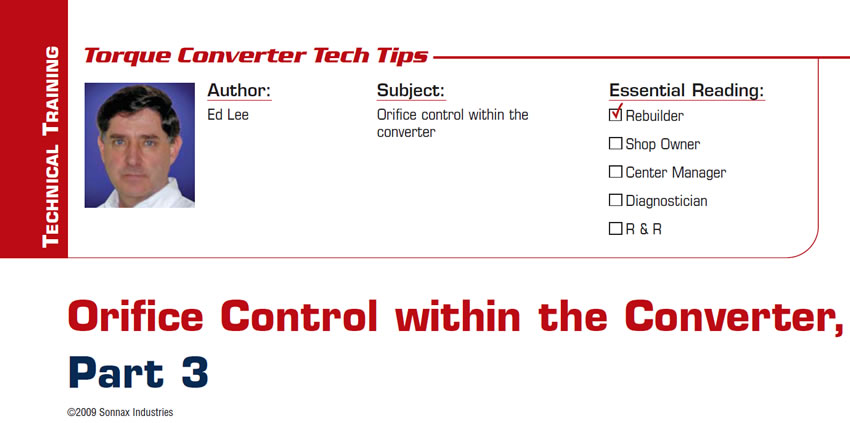6T70/75 Converter-Pilot Issues
To date most of the converters seen at converter-remanufacturing facilities have had vibration and/or leak complaints. After taking a closer look at the attachment between the pilot and cover, it is easy to see why (Figure 2).
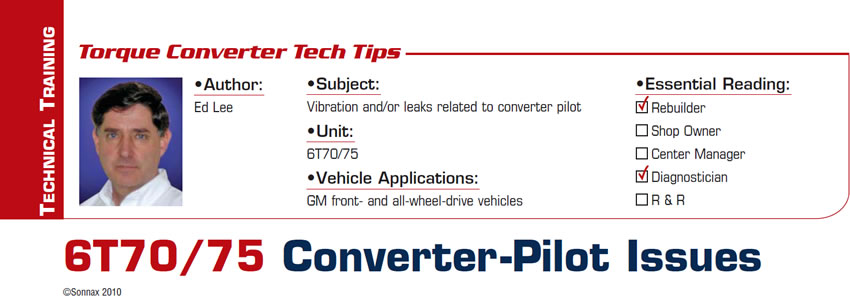
Upgrading the Flat TCC Pistons for the 4L30-E & 4T65-E
The 4T65-E and 4L30-E share a number of issues related to the torque-converter clutch (TCC). Both transmissions are notorious for their TCC-application and shudder problems. A root-cause analysis of each application yielded similar results.

Premature Failure of Mitsubishi Galant Ring Gears
Torque-converter rebuilders have been reporting an increase in the number of failed ring gears on Mitsubishi Galant converters. Most of the failed ring gears are found on 2006-08 vehicles equipped with V-6 engines, and the failures seem to occur soon after the vehicle’s starter has been replaced.
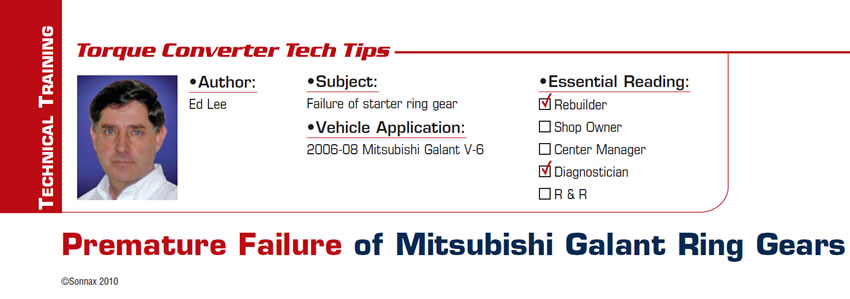
Cast-Iron Powerglide Leaks
The cast-iron Powerglide® transmission shares one distinction with the motor cars and motorcycles manufactured in the U.K: They all leak. Any transmission-shop owner who is being honest with himself will admit this. Most are not surprised to see the owner of an early-model Chevrolet returning to their shop with a piece of cardboard adorned with a large red spot.
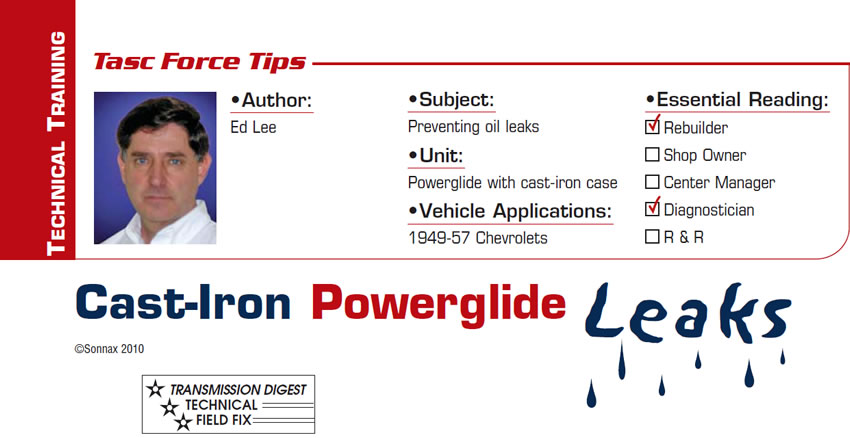
722.6 Cold Stall/Shudder, Part II
In last month’s article, technicians found that centrifugal force acting on oil trapped between the TCC piston and cover in the 722.6 converters was applying the clutch on cold startup. They also learned that the cold-stall issue could be eliminated by forcing the oil out of the cavity between the piston and cover. Finding the root cause of the cold-stall issue – and the subsequent fix – solved many other customer complaints and symptoms, including downshift shudders and tugging sensations.
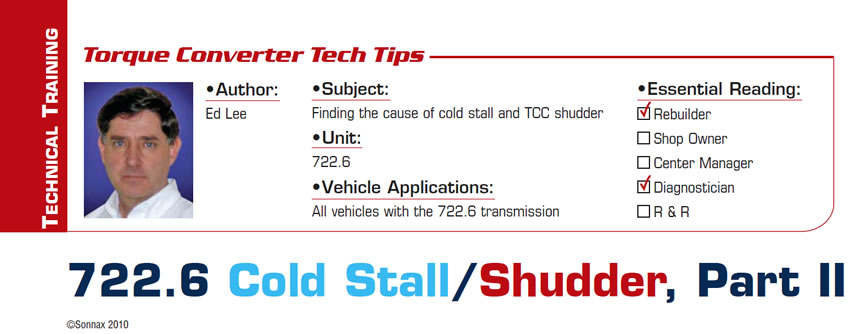
Mercedes 722.6: Cold Stall/TCC Shudder
For several years, technicians have been trying to solve the mysterious cold-stall issue in vehicles equipped with Mercedes 722.6 transmissions. When the problem was first identified, it was thought to be associated with aftermarket components. At that time, no one had seen the problem in a vehicle that still had only original equipment.
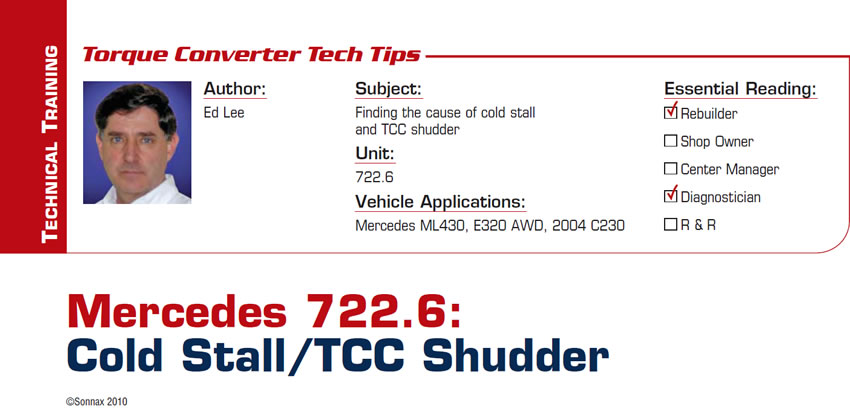
Taking the Fear out of Rebuilding the New GM Captive Clutch
The new General Motors captive clutch has four spring-steel straps that restrict the rotational movement of the piston. One end of each strap is riveted to the piston and the other end is riveted to the cover (figures 1a and 1b).
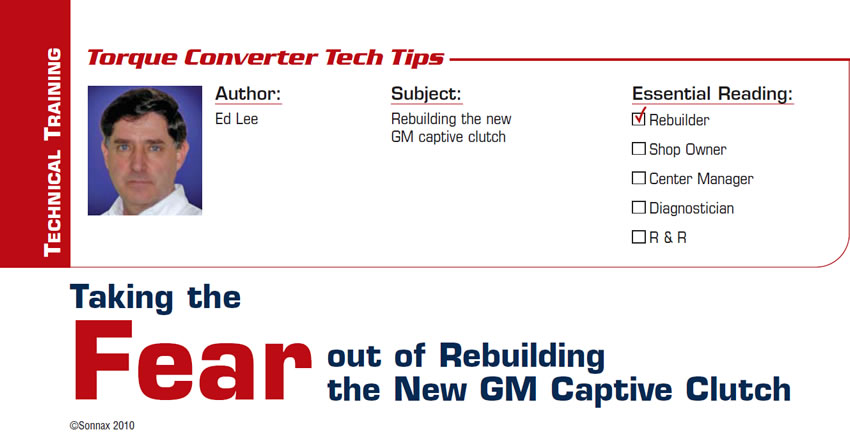
More Torque-Converter Forensics
Try to imagine the difficult job tech-line technicians have. They are asked to decipher bits and pieces of information that may not be accurate and then come up with the correct answer. The information the technicians collected for the following two scenarios seemed to be as different as night and day. The information even originated in different countries. The amazing thing about these different complaints and symptoms was that they all had the same root cause.
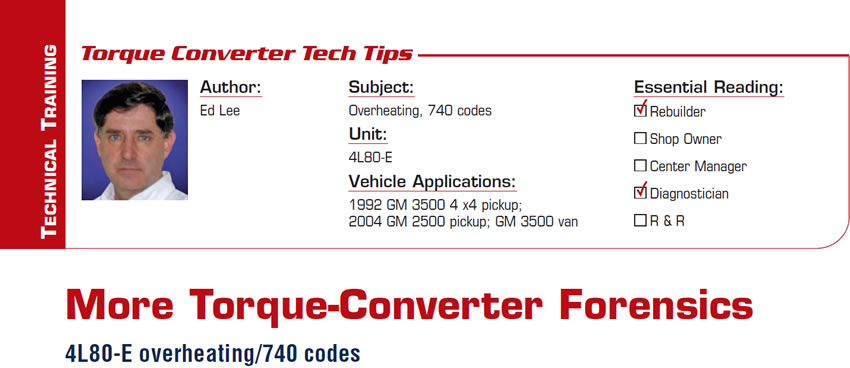
Finding the cause of Honda 740 codes
Many converter shops have reported having Honda converters returned to their shops because of 740 codes. In most instances, the remedy was to install a new OEM converter.
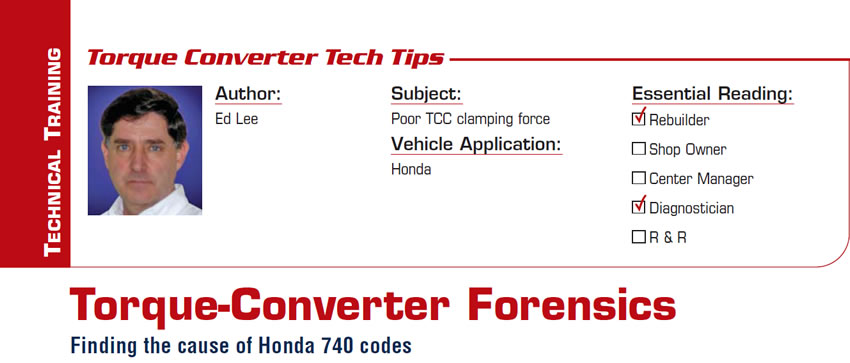
Checking for Cracks
Attendees at the 2009 Torque Converter Rebuilders Association (TCRA) seminar in Tennessee were introduced to a couple of interesting methods of checking torque-converter covers for cracks.
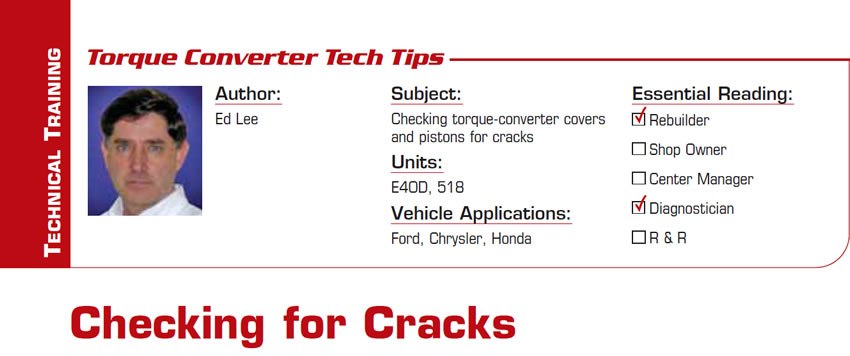
Allison 1000 Converters – the Next Generation
The Allison 1000 converter has evolved considerably throughout its existence. By the end of the 2007 model year there had been five different generations of this converter. The chart in Figure 1 lists the part name, stall torque ratio, part number and color ID code for the first five generations of this converter (Transmission Digest, November 2007, page 47).
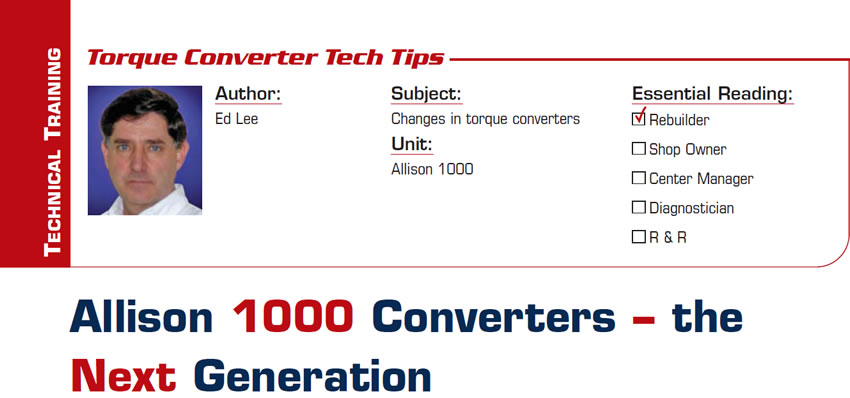
Orifice Control Within the Converter, Part 3
The secondary path of the charge/TCC-release oil is regulated to some degree by transmission parts within the confines of the converter. In some units, the charge oil is regulated by the orifice created between the raised area on the stator shaft (or support) and the impeller hub. In other units, it is regulated by restricting the flow of oil through or around the input-shaft bushing mounted inside the stator support. The Allison 500 series is a unique example because it uses both methods to regulate oil flow, as it both enters and exits the converter.
